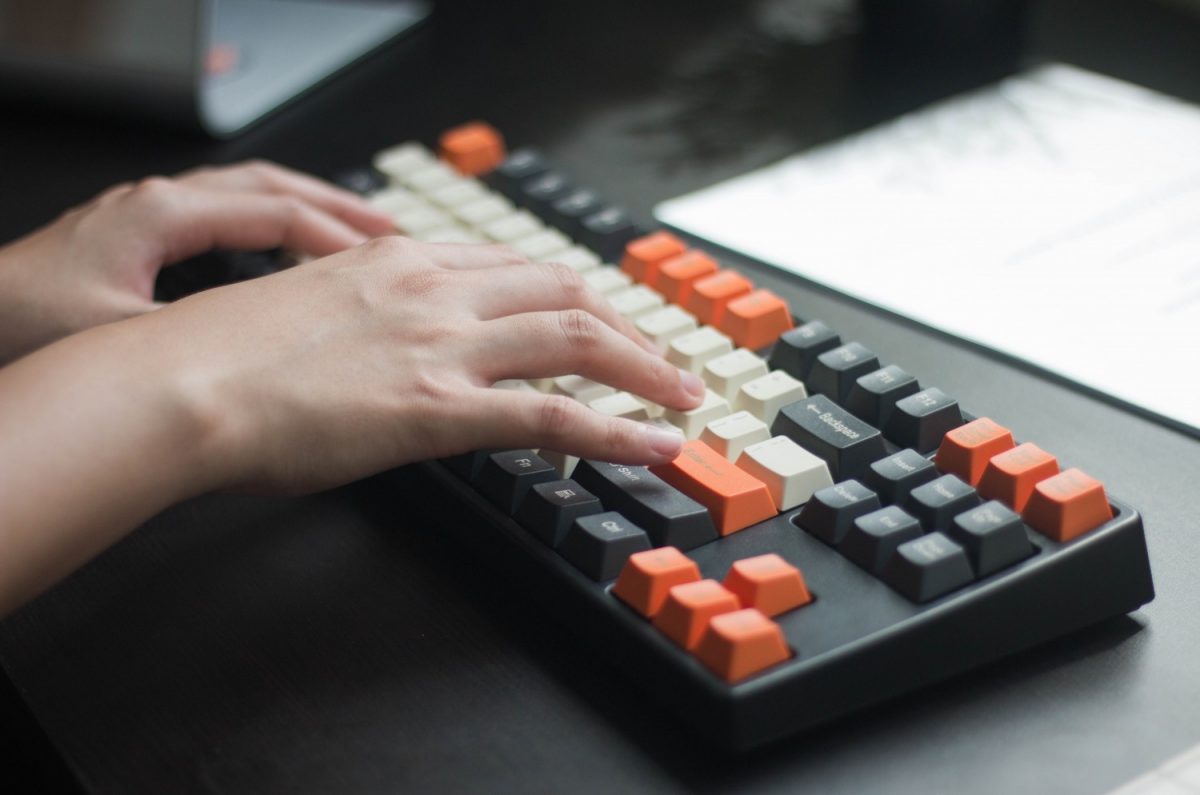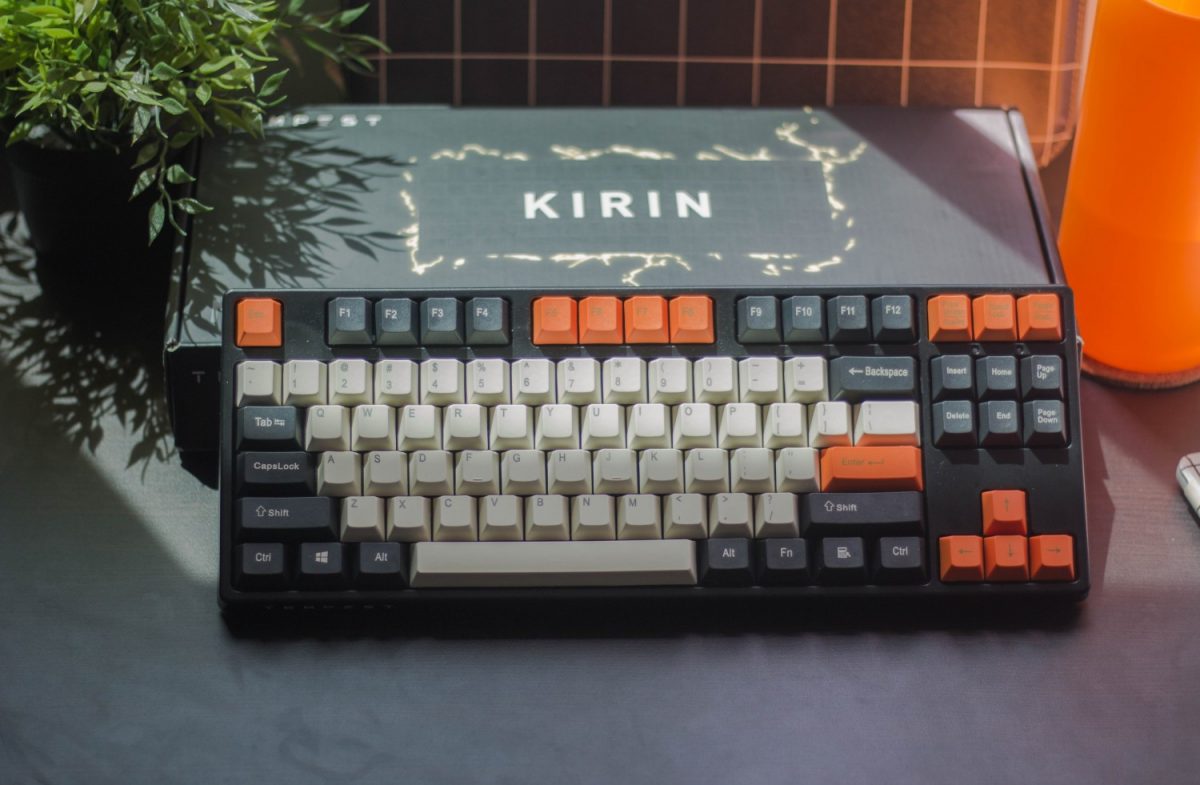- Shares
- 82
The wireless-versus-wired debate is an age-old one that has been evolving over the years. Where the latter used to be the household pick due to concerns like increased latency and battery life, more users have been making the switch to the wireless lifestyle, especially with the current trend of minimalist, less cluttered workspaces. Compact, convenient but sadly, rather uncommon at an entry level price point, until now.

Local tech start-up Tempest seeks to deliver this standard in the form of their debut product, the Kirin wireless mechanical keyboard. It comes in two striking tenkeyless (TKL) iterations, with the base design steeped in the company’s goal of combining both affordability and high-end functionality.

The first is the black-glazed Monarch. Taking on a complementary colour scheme of black, orange, and white, the keyboard sports an elegant, stylish cut tucked into a lightweight, slim frame. The clean aesthetic, in particular, would appeal to those who are looking for a more inconspicuous, classy pick – especially since it can blend easily into both work and gaming setups.

Its white-bodied sibling Crayon, meanwhile, is decked out in brightly-coloured keys that include blue, green, yellow, red, and the occasional orange. The vibrant and eye-catching hues may appear a little garish for some, but the extra pop of colour does give the keyboard a little personality, and differentiate it from the usual black-keyed models on the market.
While these look like common keyboards, they were born from the minds of three gaming friends who adopted the rather unique hobby of keyboard collection and building over the years, which is what led to the formation of Tempest – to offer performance keyboards to the masses, at prices that will not break the bank.
Both the Monarch and Crayon offer a choice of Cherry MX Blue, Red, and Brown key switches for different preferences. Those who find comfort in the click-clack of keys can go for the Blue, while the latter two are designed to be linear and tactile respectively. The more competitive gaming enthusiasts may also wish to opt for either the Reds or the Browns, because Blues reduce the triggering speed of multiple keys, putting them at a slight disadvantage – especially for MOBA and shooter fans.

It’d be good to mull over the selection, since the lack of a hot-swappable PCB (printed circuit board) means the switches cannot be swapped after installation without modifications to the original board.

Even at the higher end of the price spectrum, not every keyboard is equipped with the sturdier, more resilient PBT keycaps. ABS remains the norm in most cases, so it certainly makes for a pleasant surprise that Tempest has picked the more wear-resistant choice for the Kirin. While the caps appear to be a little thin, and the rougher texture does need some getting used to, there’s at least no sign of the unsightly glossy residue often seen on ABS-fitted keyboards.
The use of PBT technology means the legends have been printed by means of dye sublimation, and that allows for the much-welcome property of enduring use. However, a closer look at them would reveal slight inconsistencies and misprints, such as off-centre and uneven lettering. These are few and between, but nonetheless serve as points for improvement for the Singapore start-up.

Another prominent feature of the Tempest Kirin is its backlight, which is a rarity among wireless mechanical keyboards. It’s not of the RGB variant found on gaming models, and instead takes on a white glow, with a total of seven presets that can be toggled via the number row.

Unlike most other wireless keyboards, the TKL build also swaps out the conventional AA and AAA batteries for a 1,850mAh lithium-ion battery. In theory, it’s expected to last up to 60 hours, but the lack of a battery indicator makes it difficult to gauge just how accurate the estimation is. There’s no cause for worry, though: the keyboard continued to go strong even after a whole week of use with backlight turned on during the review period, so it should make for quite the trusty companion – battery-wise, at least.

For all their convenience, wireless products are not always seen as the first choice due to user concerns over increased latency and a drop in connectivity. The Tempest Kirin, however, throws such associations out of the window with its impressively lag-free and responsive performance, even in a crowded setting. Still, it’s recommended to plug in the accompanying colour-matching USB cable for gaming purposes.
The pairing process proves to be a straightforward, albeit slightly tedious, affair if the instructions on the user manual are adhered to. This comes in especially handy for users who require a keyboard to work across different setups, and even across different operating systems – it offers both the Windows and Mac keyboard layouts that can be easily swapped by simultaneously pressing the Function and S for the latter, and Function and A for the former. It’s a nifty touch, and most certainly a pleasant surprise for an entry-level build.
That being said, the Tempest Kirin doesn’t allow for the reprogramming of keys, because it lacks a default software to support the feature. Some keyboard shortcuts are possible, such as disabling the Windows key to simulate a gaming mode of sorts, but what you see is pretty much what you get here.

It’s good news, then, that its key placement is extremely standard and exactly how one would expect a typical keyboard to look like. A minor gripe with some TKL models on the market is their unconventional, tailored key arrangements that would take some getting used to. With the Tempest Kirin, there’s no need to re-familiarise yourself with the position of the keys.
In general, typing and gaming with the keyboard have been quite a satisfactory experience, barring one small flaw. The installation of OEM stabilisers has granted the bigger keys on the keyboard a reduced wobble effect, but they seem to be a mushier to the touch, as compared to the firmer, more consistent build their Cherry counterpart sports. The entire board, though, is very solidly designed, and yields no flex when pressure is applied – a considerably decent feat at its price tag.

At S$149, the Tempest’s Kirin is a good step into the wireless mechanical keyboard scene, especially for first-timers with a leaner wallet. Its combination of affordability and functionality shows that quality doesn’t necessarily come at a cost, and the effort to bring something fresh to the local market is rather evident. Sure, there are some slight flaws here and there, and some features could do with a little more consistency and precision, but it’s a pretty respectable first attempt. The bar has been set, and now it’s time for the local company to up their game, and reveal what’s left in their sleeves with their next outing.
GEEK REVIEW SCORE
Summary
Affordable, far-from-perfect, eye-catching, competent – the Tempest Kirin is a lot of things, but there’s no denying its performance and quality prowess, especially for a debut showing. A good starting pick for newcomers, and a decent buy for wireless mechanical keyboard enthusiasts without breaking the bank.
Overall
8.1/10-
Aesthetics - 8/10
8/10
-
Build Quality - 8/10
8/10
-
Performance - 8/10
8/10
-
Value - 8.5/10
8.5/10
-
Geek Satisfaction - 8/10
8/10















